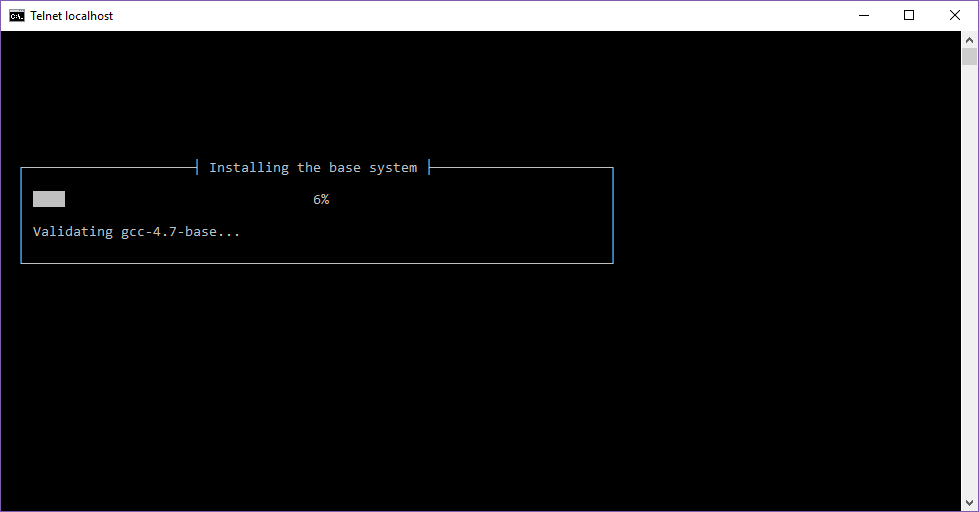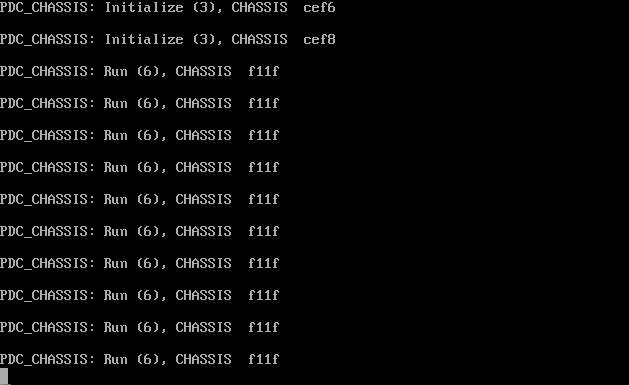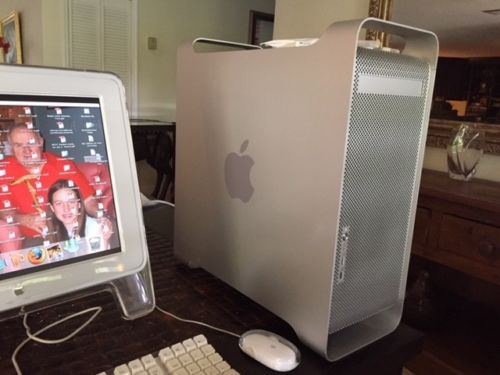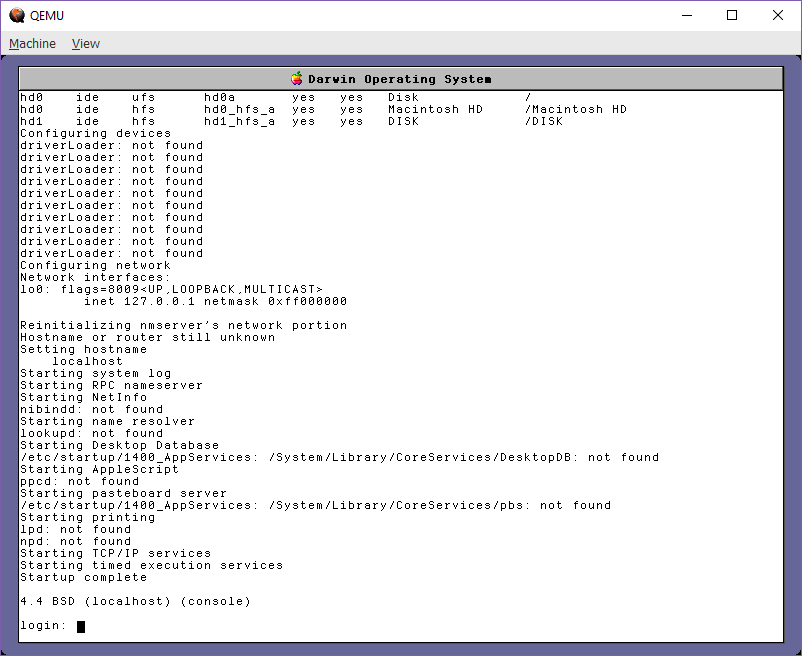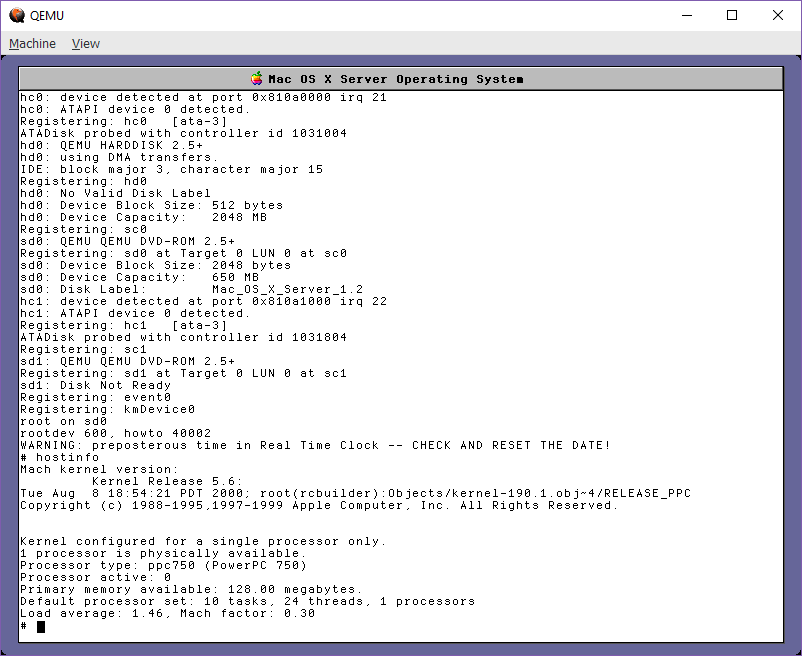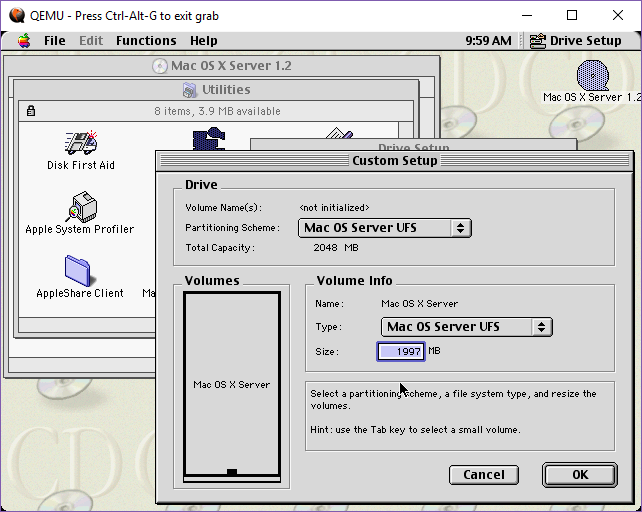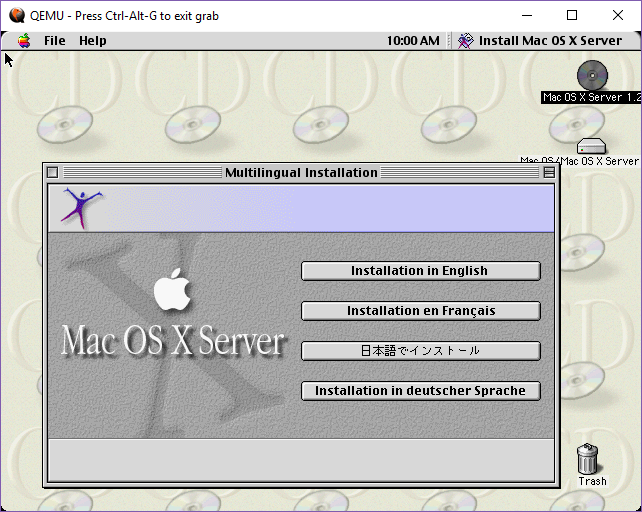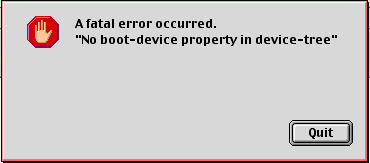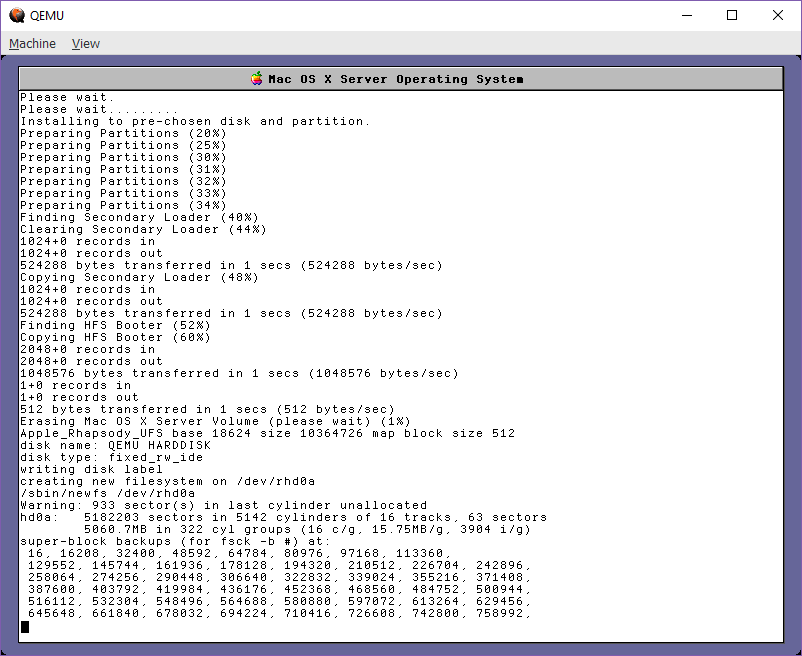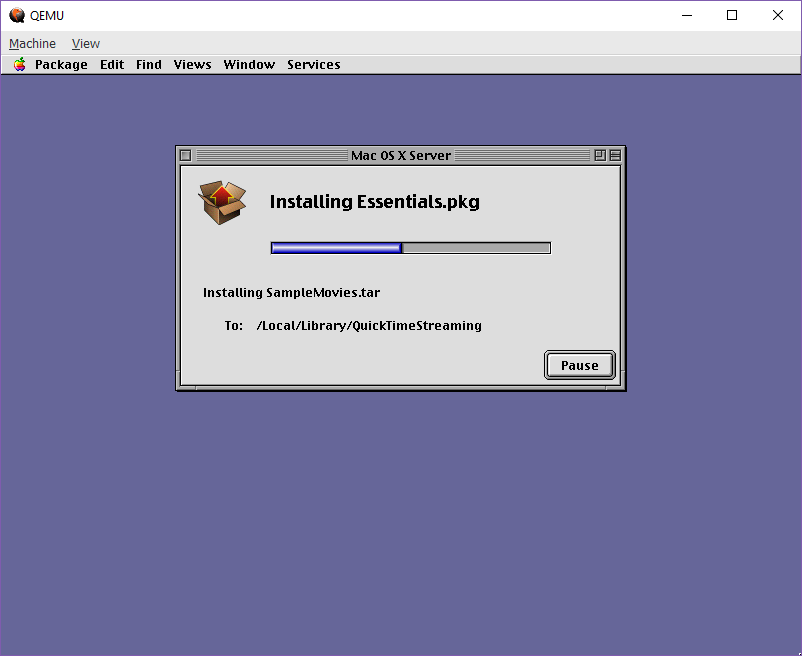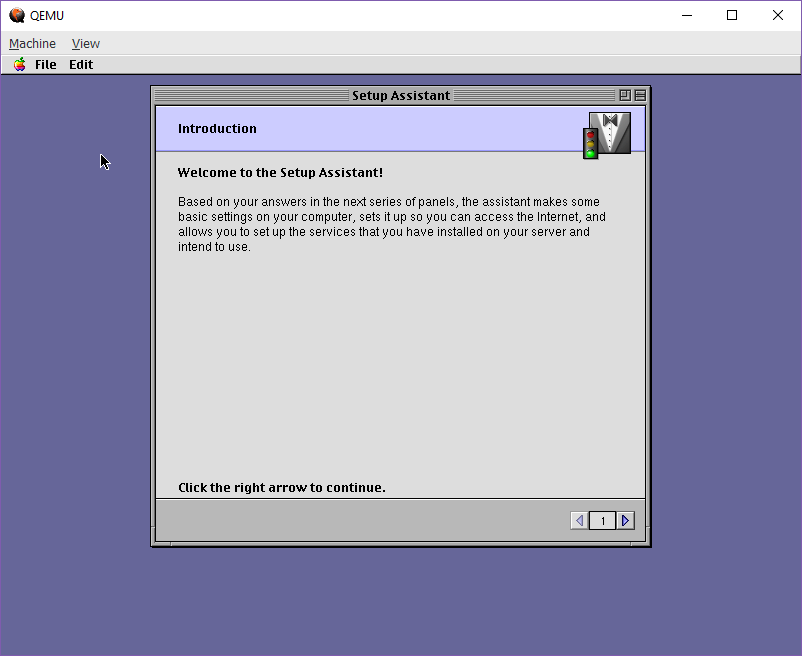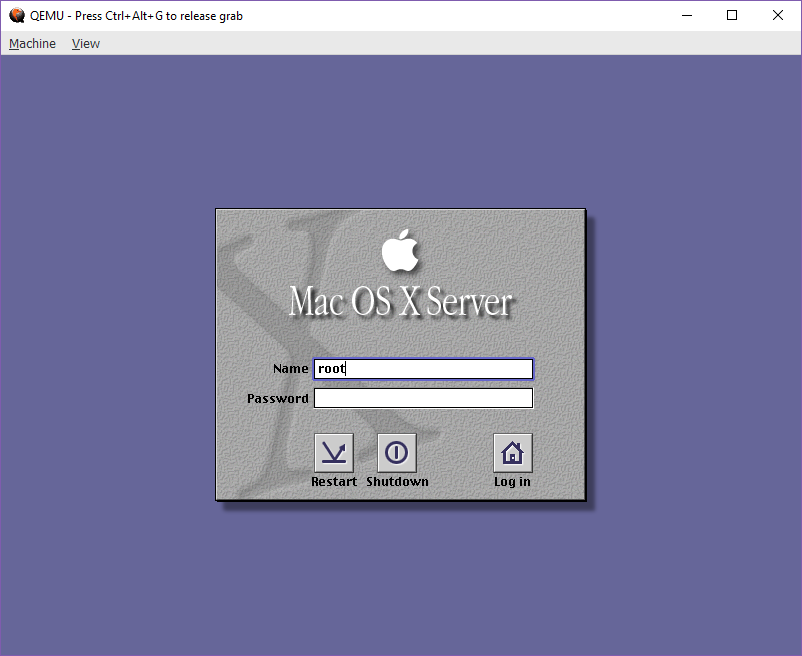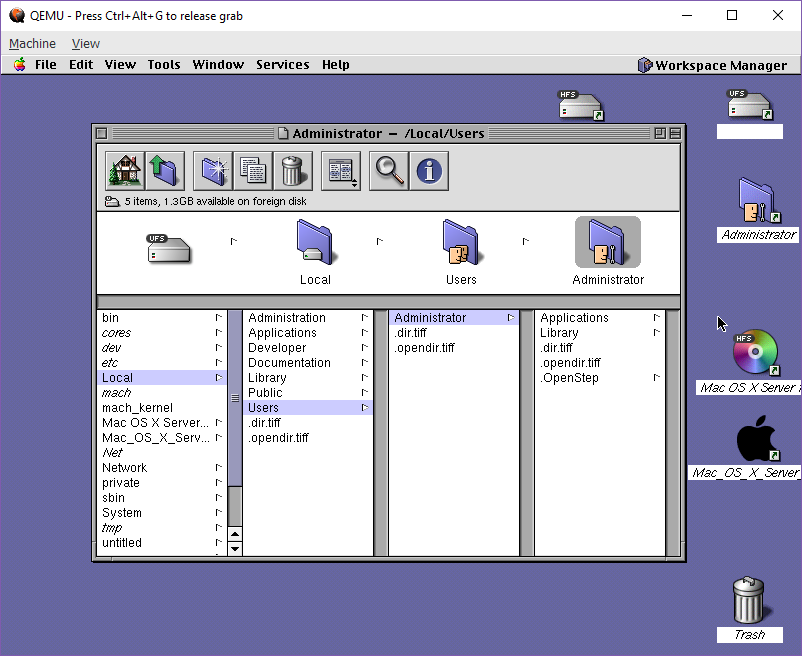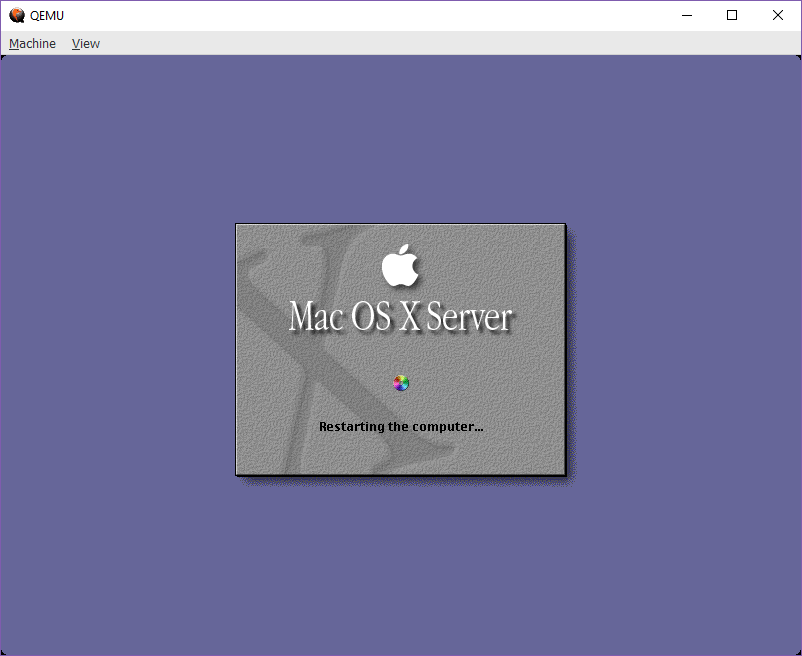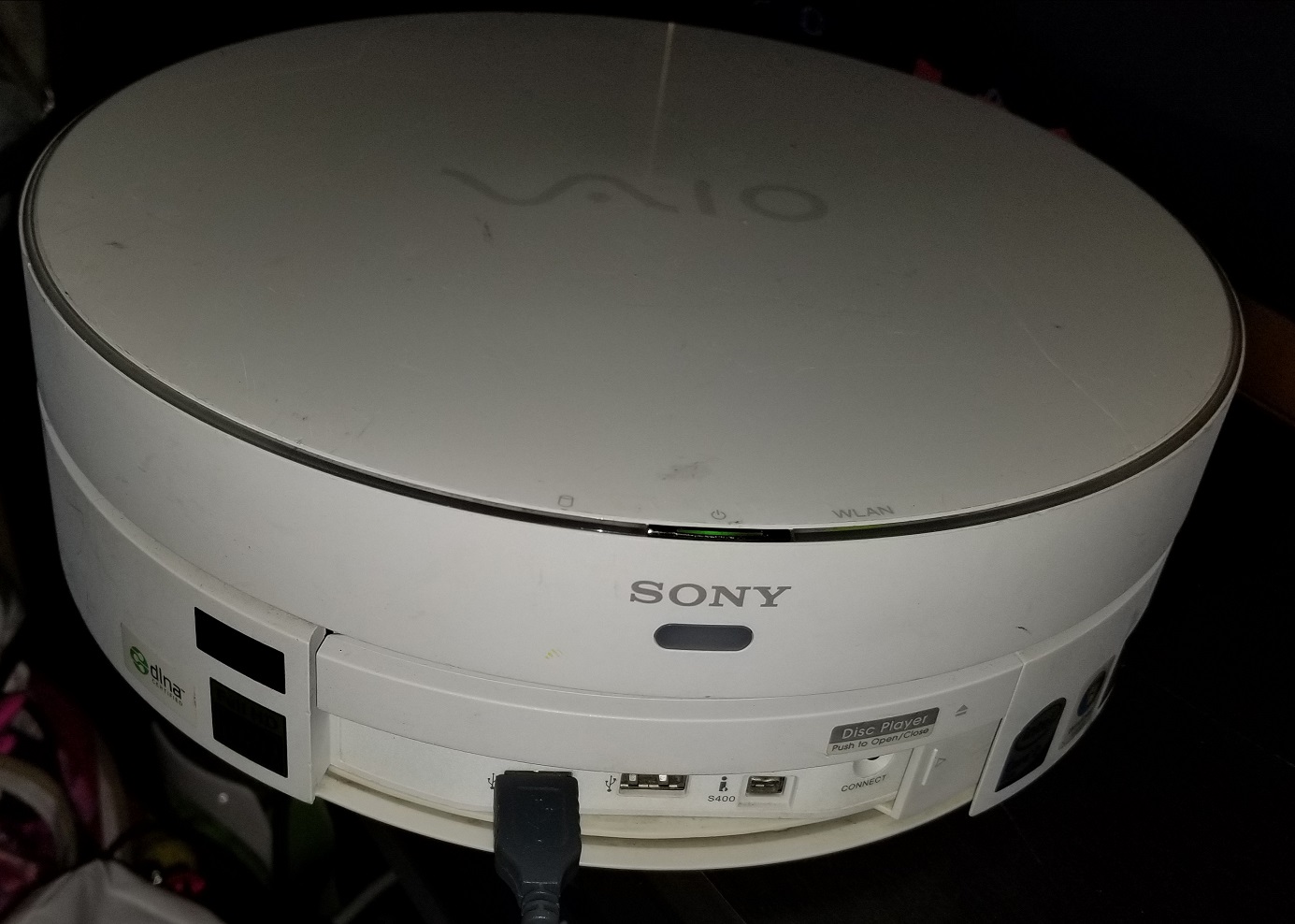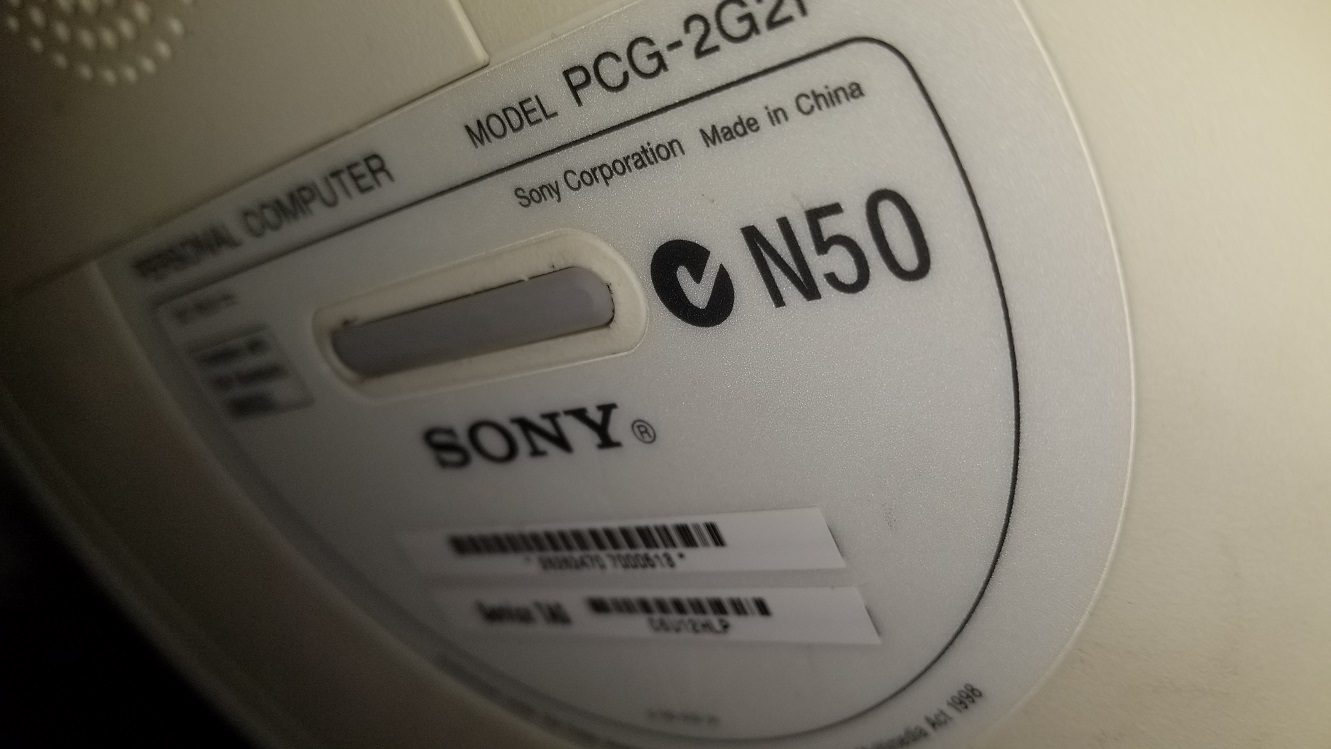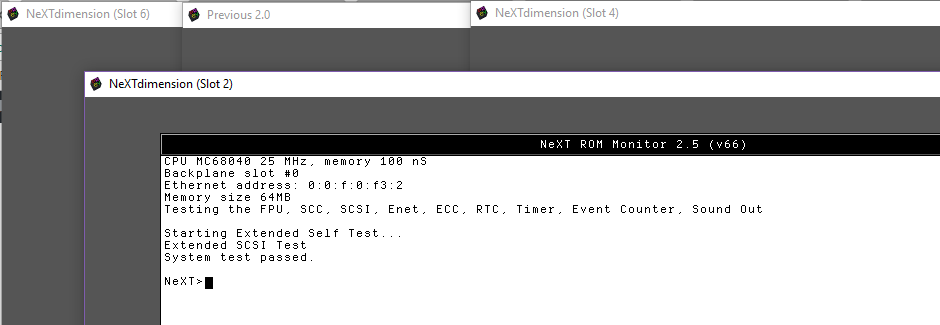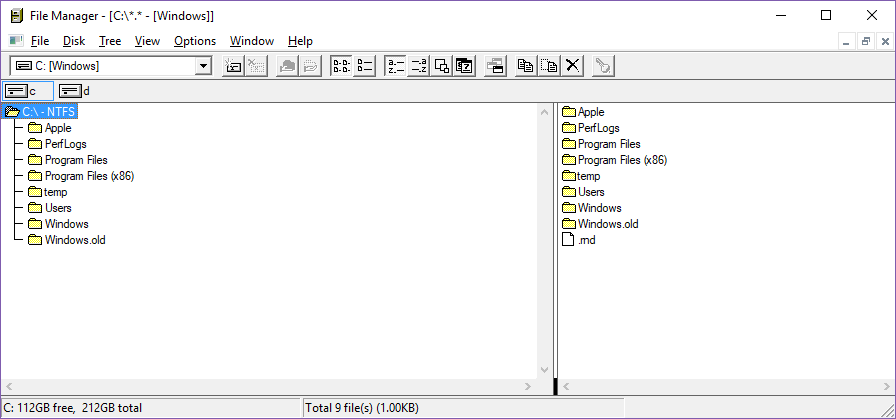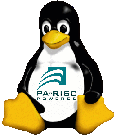 I’ve worked on machines with HP-UX, but never owned one. Well Qemu now has system emulation thanks to Richard Henderson! You can find information over at:
I’ve worked on machines with HP-UX, but never owned one. Well Qemu now has system emulation thanks to Richard Henderson! You can find information over at:
https://parisc.wiki.kernel.org/index.php/Qemu
Being the unfair person I am, I thought I’d try NeXTSTEP to see how far it gets.
Processor Speed State Coprocessor State Cache Size --------- -------- --------------------- ----------------- ---------- 0 250 MHz Active Functional 0 KB Available memory: 512 MB Good memory required: 16 MB Primary boot path: FWSCSI.6.0 Alternate boot path: LAN.0.0.0.0.0.0 Console path: SERIAL_1.9600.8.none Keyboard path: PS2 Available boot devices: 1. DVD/CD [lsi 00:00.0 2:0 Drive QEMU QEMU CD-ROM 2.5+] 2. lsi 00:00.0 0:0 Drive QEMU QEMU HARDDISK 2.5+ Booting from lsi 00:00.0 0:0 Drive QEMU QEMU HARDDISK 2.5+ Booting... Boot IO Dependent Code (IODC) revision 153 HARD Booted. Can't determine I/O subsystem type NEXTSTEP boot v3.3.4.17 524288 memory NEXTSTEP will start up in 10 seconds, or you can: Type -v and press Return to start up NEXTSTEP with diagnostic messages Type ? and press Return to learn about advanced startup options Type any other character to stop NEXTSTEP from starting up automatically boot:
And amazingly the bootloader works, although that is about it. Trying to boot up OpenBSD gets about this far:
PDC_CHASSIS: Initialize (3), CHASSIS cec0 >> OpenBSD/hppa CDBOOT 0.2 booting dk0a:/bsd.rd: 2703360+851960+2675712+547840=0x8631f0 SeaBIOS: Unimplemented PDC_CACHE function 1 8ddad0 1 1 1
I found on Windows though that the Debian 8 CD’s work the best, as the earlier ones lock up after loading a kernel, and the later one doesn’t fully initialize. I’ve been using this one: debian-8.0-hppa-NETINST-1.iso Serial console interaction is the way to go, so I ran Qemu like this:
qemu-system-hppa.exe -L . -serial telnet:127.0.0.1:4444,server,wait -boot d -cdrom debian-8.0-hppa-NETINST-1.iso -hda Deiban8HPPA.vmdk
So this way I can get get the install kicked off. Although I should probably have just downloaded debian-8.0-hppa-CD-1.iso
Otherwise, yeah, it’s Linux, on HPPA
And for anyone who is interested, the only version of HP-UX I have hanging around, HP-UX 10.20 [HP9000 S700] gives me the following:

